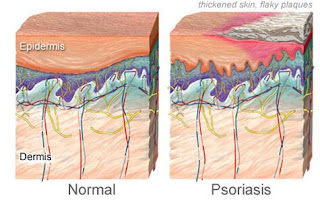If you have psoriatic arthritis, you and your doctor are working toward the best treatment plan for you, be it biologic medications, disease-modifying anti-rheumatic drugs (DMARDs), or something else. But did you know that there are several natural therapies that may also help you manage psoriatic arthritis? When used along with doctor-prescribed medications, certain complementary and alternative therapies can be effective for joint pain and other symptoms, says Natalie E. Azar, MD, assistant clinical professor of medicine and rheumatology at the Center for Musculoskeletal Care at NYU Langone Medical Center in New York City.
Luc Maes, ND, DC, a naturopathic doctor in Santa Barbara, Calif., agrees: "Psoriatic arthritis is a complex condition, and the treatment regimen needs to include several approaches."
Here are some natural therapies to consider for psoriatic arthritis.
Acupuncture
"Acupuncture is best known for its ability to manage pain," says Dylan Stein, a licensed acupuncturist in New York. And there's research to back the claims about acupuncture's pain-relieving abilities, including a 2012 report in JAMA Internal Medicine that found acupuncture to be effective for the treatment of chronic pain. When working with someone with psoriatic arthritis, Stein says that the goal is to balance the constitution, meaning restore physical, emotional, and mental health. "By doing so, we can help with fatigue and other associated symptoms," he says.
Massage
Massage may be helpful for people with psoriatic arthritis, Dr. Azar says. One area of the body people with psoriatic arthritis may want to focus on is the enthesis, where ligaments, tendons, and muscles attach to bone.
"That's where many people with psoriatic arthritis feel the most pain and where the majority of their inflammation can be found," Azar says. "Massaging the muscle areas adjacent to the joints may offer significant pain relief." The National Center for Complementary and Alternative Medicine (NCCAM) recommends using a trained massage professional to help ease pain.
Reiki
Reiki is centered on the belief that energy can be guided to help the body heal. Reiki practitioners place their hands on or immediately above your body, with the goal of helping to remove blocks and guide energy to flow freely to the areas that need relief. Regulating energy flow may improve a person's mental and emotional state and reduce pain, Maes says. Azar adds that Reiki also offers relaxation benefits. Although Reiki is considered safe, limited scientific research has been done to determine its effectiveness.
Mindfulness and Meditation
Meditating or practicing mindfulness may change the way you respond to psoriatic arthritis symptoms like pain, fatigue, and stiff joints. One study, published in The Clinical Journal of Pain in 2011, found that a mindfulness-based, stress-reduction meditation program helped participants with chronic pain. Mindfulness, which is a key component of meditation, involves going within yourself and focusing on a place of relaxation and mental calm.
Mind-and-Body Exercises
People with psoriatic arthritis should exercise regularly, Azar says. According to the National Psoriasis Foundation, exercise may help ease joint pain, increase range of motion, and improve flexibility. It also helps prevent obesity, which can make psoriatic arthritis symptoms more severe.
Two types of exercise — yoga and tai chi — have the added benefit of mindfulness for reducing stress. "If the goal is maintaining and enhancing the joint's range of motion, then yoga is the best option," Azar says. "Tai chi is probably most beneficial for people who can't engage in more vigorous activity.

No comments:
Post a Comment